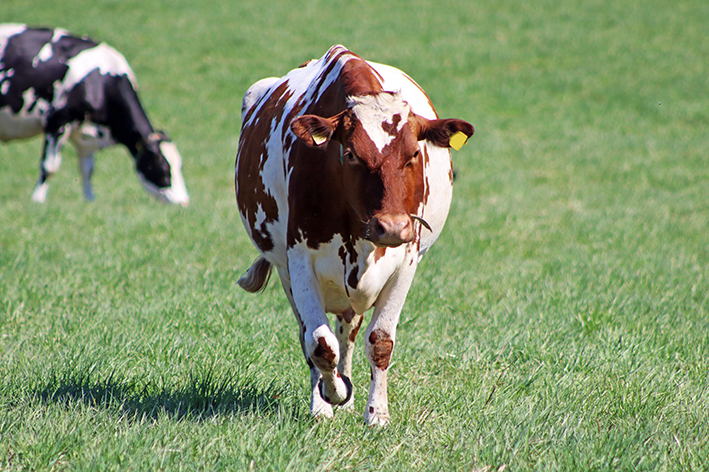The project course of Agricultural Sciences at the University of Helsinki looked how Finnish dairy farmers view Ayrshire breed and how breed’s position could be improved in the future.
The share of Finnish Ayrshire or better to say Nordic Red, has decreased in Finland year after year. While dairy cattle in 2014 consisted almost 60 % from Ayrshire, 2023 only 37 % of national herd was of that breed.
Based on Faba’s request us students tried to find ways to stop the development. Our most important tool was a survey which was available for dairy farmers in late March and early April. There goal was to find the reasons for Ayrshire’s decline as well take propositions for future development. The number of respondents was very pleasant, 859, and detailed answers revealed topic being very important for farmers.
Ayrshire’s smaller production is a challenge
The choice about breed and animals is of great financial importance for the dairy farmers but also matter of personal preference. Based on the survey there is certainly people preferring Ayrshire but only handful of farmers increase proportion of breed in their herds.
A main challenge for many farmers with Ayrshire was breed’s smaller production compared to Holstein. That problem is pronounced in C-subsidy area, where Nordic production subsidy for milk is applied. The production subsidy increases relatively the profitability of higher production level.
Other development issues within Ayrshire include udder and leg structure and as well temperament. Evenness was also sought in the breed, and the great variation in the level of offspring was criticized. However, genetic variation is a prerequisite for successful breeding, especially if prepared for different scenarios.
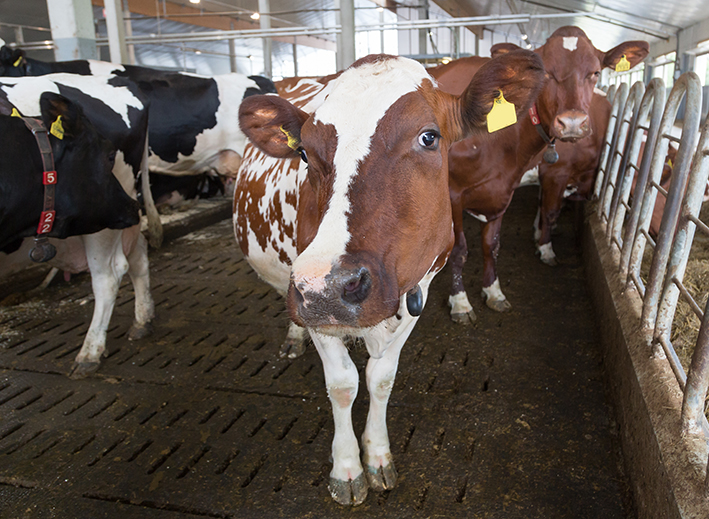
Character is both a strength and a weakness
The benefits of the Ayrshire were cited as its durability, smaller size, milk solids content and character. However, not all respondents gave same value for these traits. Small size and durability were valued in herds with the old barn and summertime grazing. Some of the modern livestock entrepreneurs thought that Holstein is durable enough, and primarily did not want smaller Ayrshires in their barn. Although Holstein is also perceived as durable, according to milk recording statistics, Ayrshire’s health is still better.
Character is clearly both a strength and a weakness of the Ayrshire. It is perceived as persistent and strong-willed, but on the other hand also wrong-headed and difficult. Since people’s preferences vary, it can be difficult to calculate a value for character.
Mixed herds’ feeding challenge
The planning and implementation of feeding was perceived as a challenge in mixed herds. A feeding optimized by Holstein requirements, can increase Ayrshire’s body condition score too much in the end of the lactation, which leads to health and calving problems while being also inefficient. Therefore, partial mixed ration (PMR) could be better in mixed herds, but it may require more work or investments. Ayrshires have a smaller feed requirement than Holsteins, so feeding too energy-dense diet can easily cause problems. Balancing feeding in mixed herds requires special skills from the farmer.
Grazing was more common in Ayrshire herds than in Holstein herds. A factor here is probably the obligatory grazing of tie-stall barns, where Ayrshire is the most popular. On the other hand, the smaller size of the Ayrshire is benefit in grazing due to the reduced compaction of grass and better ability to walk long distances.
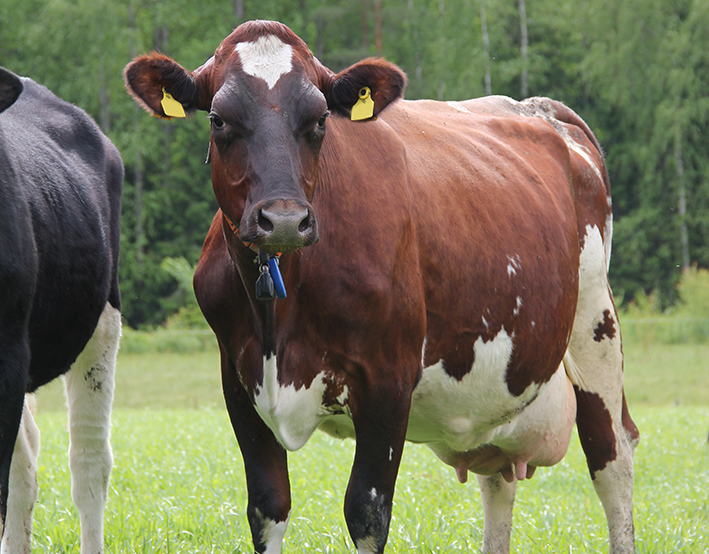
What about profitability?
According to the Danish profitability calculation previously presented in Nauta magazine, the difference in profitability between Holstein and Ayrshire is relatively small, just under 40 euros per cow in favor of Holstein. VikingRed’s output is lower than Holstein’s in both liters and ECM but thanks to better health and fertility, the bottom line is almost as large for both.
Milk concentrations have mainly been the advantage of Ayrshire, but relatively high concentrations are also seen in Holstein. Globally high milk fat contents in Finnish Holstein herds can be primarily due to rumen-bypass fat in concentrates, and the price of component may rise due to its high nutritional quality and processing value.
For Ayrshire herds, grazing may improve profitability if organized in the efficient way. Although many owners of Holstein herds considered Holstein to be more profitable than Ayrshire, many also saw the breeds as economically equal.
Not much interest in feed efficiency
Ayrshire’s suitability for sub-optimal barns was emphasized, but the possibly positive effect of its smaller size on feed efficiency was hardly mentioned. Due to the lower need for maintenance energy, the Ayrshire’s feed cost per liter of milk can be lower if the production level is the same than of Holstein’s. For the farmer, the feed cost per cow is practically still hidden.
One must ask how much the bottom-line for Ayrshire would improve if the possible difference in feed costs were considered. Ayrshire’s good feed efficiency is still a matter of speculation, and, for example, better feed efficiency of Jersey compared to Holstein is based above all on a Jersey’s large dry matter intake compared to live weight. Similar comparisons between Ayrshire and Holstein were not found, at least during the project.
In the survey, we asked which of the breeds the respondent’s thought was more profitable on Finnish dairy farms, to which 39% of the respondents answered Ayrshire and 32% believed breeds are equal. So, it would be interesting to know what the financial difference between these two breeds would actually be in Finland when the feed cost is included in the calculations. In addition, sustainability goals can increase the value of the feed efficiency.
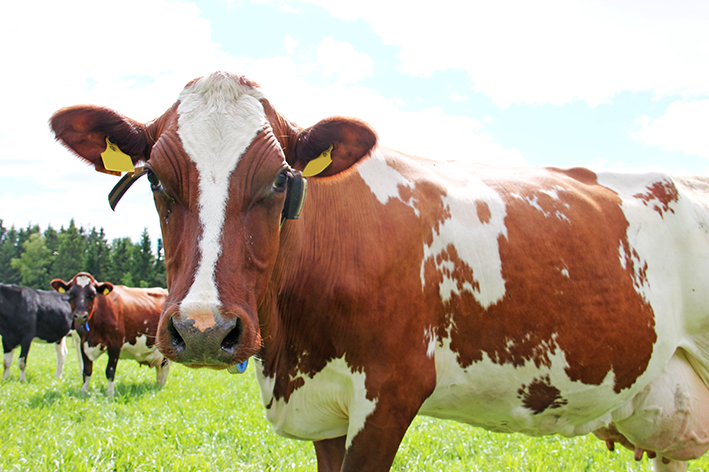
Seeing the whole picture
Farmers who see the Ayrshire positively emphasized that its benefits should be communicated better, and the breed’s image should be developed. On the other hand, many respondents considered problems, such as inapplicability to a robot, to be currently insurmountable for success.
Traits in Ayrshire asking improvement should be refined without forgetting good traits. Genetic progress could be accelerated with new and already used breeding technologies. For example, more use of sexed semen was desired, and encouragement was desired to increase its use. In addition, more progeny-tested bulls were especially wanted for AY.
In the end, it is important to see the whole picture of profitability, especially feed efficiency and health characteristics should be converted into euros, because liters do not tell everything. Grazing is clearly more common in Ayrshire herds, and if Ayrshire is a better grazer than Holstein, could that be one of the breed’s advantages, for example? On the other hand, the genetic diversity of Ayrshires which has still quite high production is important for breeding, although this benefit is not directly visible in the daily life on the dairy farm.
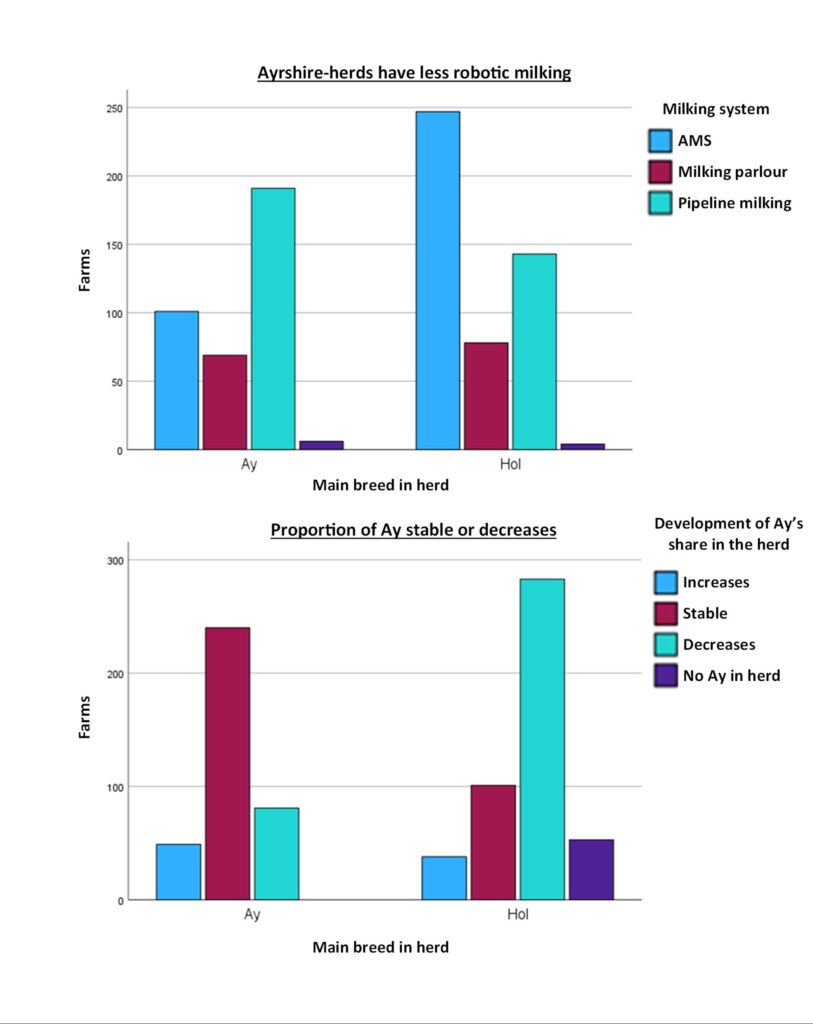
Authors: Reetta Keisalmi & Tommi Karhula
Pictures: : Sanna Mäkinen, Sanna Lohenoja & VikingGenetics
Members of the project course AGRI-021 at University of Helsinki were Reetta Keisalmi, Dilruba Yasmin ja Tommi Karhula.
Literature used in this article:
Kristensen et al. (2015). Feeding, production, and efficiency of Holstein-Friesian, Jersey, and mixed-breed lactating dairy cows in commercial Danish herds. Journal of Dairy Science. 98 (1). https://doi.org/10.3168/jds.2014-8532.
Tauren Pirkko: Mitä punaisista ja mustista jää viivan alle Tanskassa? Nauta 2/2024 s.14-15

